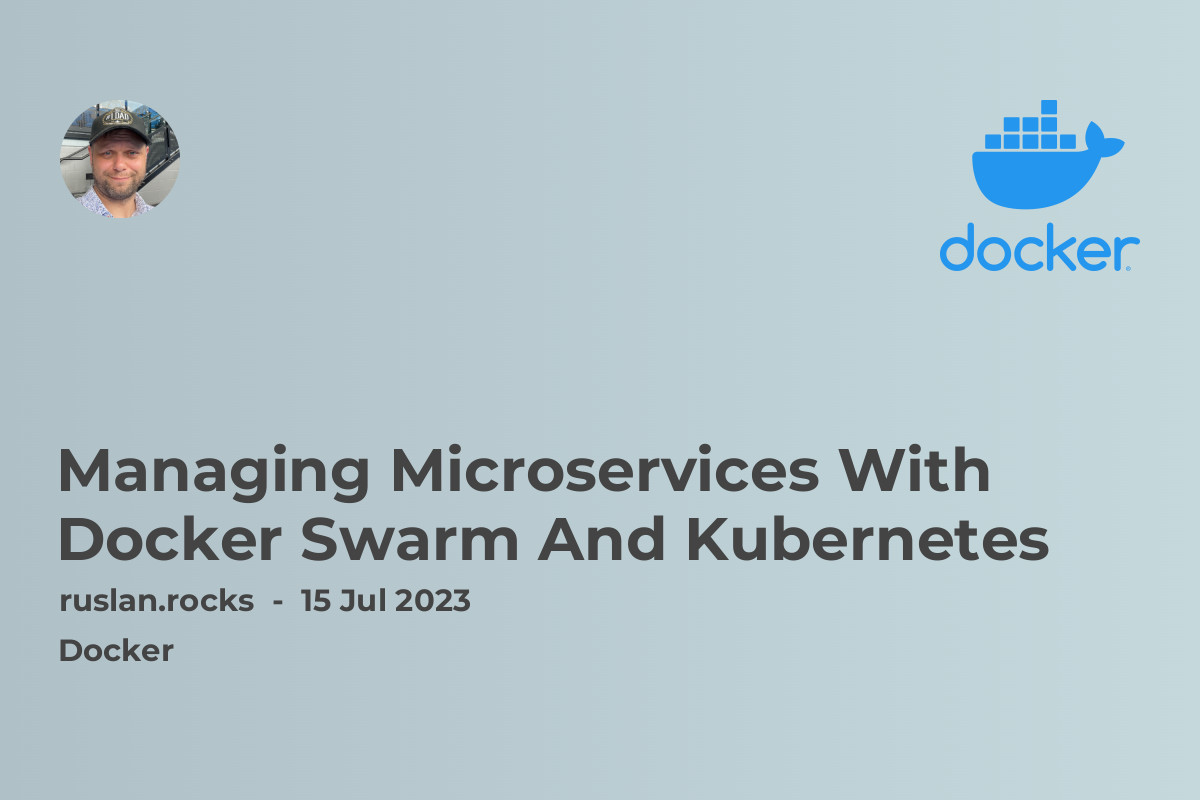- What is Docker Swarm?
- How Does Docker Swarm Work?
- Advantages of Using Docker Swarm
- What is Kubernetes?
- How Does Kubernetes Work?
- Advantages of Using Kubernetes
- Integration of Docker Swarm and Kubernetes
- Related Articles

Microservices architecture has gained popularity in recent years due to its ability to break down complex applications into smaller, more manageable services. However, managing these microservices can be challenging. In this article, we will explore how Docker Swarm and Kubernetes can help with managing microservices.
What is Docker Swarm?
Docker Swarm is a container orchestration tool that allows you to manage a cluster of Docker nodes as a single virtual system. It provides native clustering and scheduling features for Docker containers. With Docker Swarm, you can easily scale your services, ensure high availability, and manage the lifecycle of containers.
Docker Swarm is easy to set up and use, making it a popular choice for managing microservices. It provides a unified interface to manage your containers across multiple hosts, abstracting away the underlying infrastructure.
How Does Docker Swarm Work?
Docker Swarm follows a distributed architecture where a group of Docker nodes form a swarm. The nodes in the swarm can be either managers or workers. The managers are responsible for managing the swarm state and scheduling containers, while the workers are responsible for running the containers.
Docker Swarm uses a decentralized consensus algorithm to ensure that the swarm state remains consistent across all the managers. This allows for seamless scaling and failover of services.
Advantages of Using Docker Swarm
-
Ease of Use: Docker Swarm integrates seamlessly with Docker, making it easy to adopt for teams already familiar with Docker.
-
Scalability: Docker Swarm allows you to scale your services up or down by adding or removing worker nodes from the swarm.
-
High Availability: Docker Swarm provides automatic service and container recovery in case of node failures, ensuring high availability of your microservices.
-
Load Balancing: Docker Swarm automatically load balances traffic across the containers in the swarm, distributing the workload evenly.
What is Kubernetes?
Kubernetes, also known as K8s, is an open-source container orchestration platform that automates the deployment, scaling, and management of containerized applications. It provides a powerful and flexible platform for managing microservices at scale.
Kubernetes is designed to be extensible and modular, allowing you to integrate it with other cloud-native technologies and services. It provides a declarative approach to infrastructure management, where you describe the desired state of your applications and Kubernetes takes care of maintaining that state.
How Does Kubernetes Work?
At its core, Kubernetes organizes containers into logical units called pods. Pods are the smallest deployable units in Kubernetes, encapsulating one or more containers that are tightly coupled and share the same resources.
Kubernetes uses a control plane that manages the overall state of the cluster and ensures that the desired state is maintained. The control plane consists of several components, including the API server, controller manager, scheduler, and etcd, which acts as the cluster's distributed key-value store.
Kubernetes provides powerful features such as automatic scaling, rolling updates, and service discovery. It also supports advanced networking and storage options, making it suitable for a wide range of use cases.
Advantages of Using Kubernetes
-
Portability: Kubernetes provides a consistent deployment and management experience across different infrastructure providers and environments, allowing you to avoid vendor lock-in.
-
Scalability: Kubernetes allows you to scale your applications horizontally by adding more pods or vertically by adjusting the resources allocated to a pod.
-
Fault Tolerance: Kubernetes automatically recovers from container failures by restarting or rescheduling failed containers, ensuring that your microservices are highly available.
-
Service Discovery and Load Balancing: Kubernetes provides built-in service discovery and load balancing capabilities, allowing you to expose your microservices to other services within the cluster.
-
Monitoring and Logging: Kubernetes integrates with various monitoring and logging tools, allowing you to gain insights into the performance and health of your microservices.
Integration of Docker Swarm and Kubernetes
While Docker Swarm and Kubernetes are two distinct container orchestration platforms, it is possible to integrate them to achieve the benefits of both. This integration allows you to leverage the scalability and simplicity of Docker Swarm with the advanced features and ecosystem of Kubernetes.
There are several ways to integrate Docker Swarm and Kubernetes, depending on your specific requirements. One approach is to use Kubernetes as the control plane for Docker Swarm, allowing you to manage Docker Swarm clusters using Kubernetes APIs and tools. This provides a unified management experience and allows you to leverage Kubernetes features such as advanced networking and storage options.
Another approach is to run Kubernetes workloads on a Docker Swarm cluster. This allows you to benefit from the scalability and high availability provided by Docker Swarm while using Kubernetes to manage and orchestrate your applications.
The choice of integration approach depends on factors such as the existing infrastructure, team skills, and specific use case requirements. It is important to evaluate these factors before deciding on the integration strategy.
Related Articles
- Docker vs Kubernetes: Choosing the Right Container Orchestration Platform
- Benefits of Microservices Architecture for Scalable Applications
- Introduction to Containerization: Revolutionizing Application Deployment
- The Importance of Monitoring and Observability in Microservices
By exploring the integration options and understanding the advantages of both Docker Swarm and Kubernetes, you can effectively manage your microservices and take full advantage of the benefits that container orchestration provides. Whether you choose Docker Swarm, Kubernetes, or a combination of both, the key is to find the right solution that aligns with your specific requirements and infrastructure setup.
